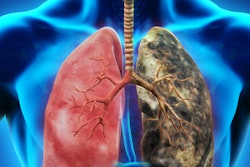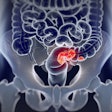
Researchers from the U.S. National Institutes of Health (NIH) have developed a prediction model that determines an individual's eligibility for CT lung cancer screening based on life years gained. The model may be a more effective alternative to traditional screening criteria, according to an October 22 article in the Annals of Internal Medicine.
"There is growing recognition that screening programs need to selectively include persons at the highest risk, for whom the benefits of screening outweigh its harms," wrote lead author Li Cheung, PhD, and colleagues from the NIH.
To that end, several institutions have sought to improve upon existing CT lung screening eligibility criteria using prediction models that, in addition to factors such as age and smoking history, take into account people's individual risk of lung cancer. Recent studies have demonstrated the ability of such risk-prediction models to avert more lung cancer deaths than traditional guidelines, including those issued by the U.S. Preventive Services Task Force (USPSTF).
"However, preventing more lung cancer deaths may not always translate to substantial gains in life expectancy," the authors wrote. "And unless high-risk patients also have sufficiently long life expectancies, they may not experience a net benefit from screening,"
Seeking to maximize the years of life gained by screening participants, the group developed a prediction model that took into account an individual's life expectancy when identifying those who would benefit most from CT lung screening. The model contrasts with the approach of more common risk prediction models, which focus on an individual's likelihood of dying from lung cancer to determine screening eligibility.
The researchers applied their Life Years gained From Screening-CT (LYFS-CT) prediction model to the data of ever-smokers between the ages of 40 and 84 who participated in the U.S. National Health Interview Survey (NHIS) from 1997 to 2009. They used the data from surveys collected in odd-numbered years to train the model and the data from even-numbered years to test the model.
The researchers compared the projected outcomes of 8.3 million ever-smokers chosen to undergo CT lung screening using three different sets of criteria:
- A selection that used the LYFS-CT prediction model to identify individuals ages 40 to 84 estimated to have at least 16.2 days of life gained from screening
- A selection that used the Lung Cancer Death Risk Assessment Tool to identify individuals ages 40 to 84 with at least a 1.4% risk of dying from lung cancer in the next five years
- The USPSTF criteria (i.e., individuals ages 55 to 80 with a smoking history of 30 or more pack years who still smoke or only quit 15 or fewer years ago)
Overall, simulations using the life years gained and risk-based prediction models showed that they were able to identify individuals who would benefit from CT lung screening more effectively than the USPSTF guidelines, ultimately preventing more lung cancer deaths and increasing life years gained.
| Comparison of risk prediction models for CT lung screening eligibility | |||
| USPSTF criteria | Risk-prediction model | Life years gained prediction model | |
| Lung cancer deaths averted | 41,300 | 55,000 | 52,600 |
| Life years gained | 538,000 | 608,000 | 633,000 |
| No. needed to screen per lung cancer death averted | 201 | 151 | 158 |
| No. needed to screen per 10 life years gained | 154 | 136 | 131 |
| False positives per 10 life years gained | 105 | 98.3 | 93.7 |
"These models can greatly improve our ability to estimate benefit for individual patients and can substantially improve the effectiveness, safety, and patient-centeredness of lung cancer screening programs," Dr. Tanner Caverly and Rafael Meza, PhD, from the University of Michigan, wrote in an accompanying editorial. "Screening guidelines should strongly consider a transition to newer methods that are likely to deliver better care."
The challenge of integrating life years gained and other complex risk-based models into CT lung screening programs is that it requires inputs and calculations that may be difficult for many healthcare networks to implement, they noted.
Nonetheless, future studies should continue to assess the value of prediction models against simpler alternatives for eligibility criteria, as well as evaluate the potential advantages of factoring in race and socioeconomic status when calculating lung cancer risk and life expectancy, they concluded.




















